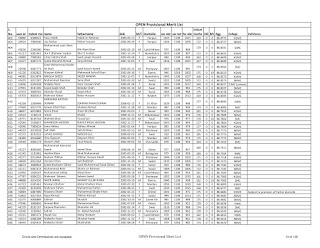Chap.21 Development aging MCQs
|
1. |
Development
and aging |
|
|
2. |
The
study of getting old or aging is called: (a)
Gerontology (B) Development (c)
Herpetology (d) Embryology |
A |
|
3. |
The
process of conversion from simple to more complex form is called: (a)
Cleavage (b) Growth (c)
Development (d) Blastula |
C |
|
4. |
After
36 hours of fertilization, the first cleavage division produce two identical
cells: (a)
Micrommeres (b) Macromeres (c)
Blastomeres (d) Blastocysts |
C |
|
5. |
A
berry shaped cluster of 16 or more cells is: (a)
Morula (b) Blastula (c)
Gastrula (d) Norula |
A |
|
6. |
Embryonic
membrane which is a trophoblastic derivative: (a)
Amnion (b) Chorion (c)
Allantois (d) Both b and |
B |
|
7. |
The
protective coat which surrounds the embryo is known as: (a)
Amnion (b) Chorion (©
Allantois (d) Chorio
Allantois |
A |
|
8. |
The
outer layer of the blastocyst, which later attaches to the uterus, is the: (a)
Deciduous (b) Trophoblast (c)
Amnion (d) Inner cell
mass |
B |
|
9. |
Identical
twins result from the fertilization of (a)
One ovum by one sperm (B)
One ovum by two sperms (c)
Two ova by two sperms (d)
Two ova by one sperm |
A |
|
10. |
The
most important hormone in initiating and maintaining lactation after birth
is: (a)
Estrogen (b) FSH (c)
Prolactin (d) Oxytocin |
C |
|
11. |
Which
germinal layer gives rise to the lining of the digestive tract? (a)
Ectoderm (b) Mesoderm (C)
Endoderm (d) Epidermis |
C |
|
12. |
Mesoderm
forms: (a)
Blood vessels (b) Bone (c)
Muscles (d) All of
these |
D |
|
13. |
End
of cleavage is marked by the formation of: (a)
Three Embryonic Layers (b)
The Archenteron (c)
The Blastula (d)
Zygote |
C |
|
14. |
Gastrulation
is marked by the formation of: (a)
Blastula. (b)
Three embryonic layers (c)
Blastocoel (d)
Zygote |
B |
|
15. |
Which
hormone is released by the anterior pituitary and directly causes ovulation? (a)
Luteinizing hormone (b)
Progesterone (c)
Follicle stimulating hormone (d)
Estrogen |
A |
|
16. |
Which
hormone causes the lining of the uterus to thicken in preparation for
implantation of the embryo? (a)
Luteinizing hormone (b)
Progesterone (c)
Follicle stimulating hormone (d)
Androgen |
B |
|
17. |
The
negative physiological changes in our body are called: (a)
Degeneration (b) Abnormalities (c)
Aging (d)
Regeneration |
C |
|
18. |
First
cleavage produces two blastomeres after hours of fertilization? (a)
3 (B) 24 (c)
36 (d) 63 |
C |
|
19. |
Early
cleavage produces a berry-shaped cluster of 16 or more cells called: (a)
Blastula (b) Morula (c)
Gastrula (d) Blastocyst |
B |
|
20. |
Blastocyst
consists of: (a)
Inner cell mass (b) Trophoblast (@)
Both of these (d) None of these |
C |
|
21. |
Which
one of the following is a trophoblast derivative? (a)
Amnion (b) Chorion (c)
Allantois (d) Yolk sac |
B |
|
22. |
The
process in which the two layered embryonic disc transforms into a three
layered embryo is known as: (a)
Blastulation (b)
Cleavage (c)
Gastrulation (d)
Organogenesis |
C |
|
23. |
Several
layers of follicle cells surrounding the ovum collectively known as: (a)
Zona Pellucida (b) Corona Radiata (c)
Corpus Albicans (d) None of these |
A |
|
24. |
Zona
pellucida is made up of: (a)
Fats (b)
Polysaccharides (c)
Glycoprotein (d) Cellulose |
C |
|
25. |
Mesodermal
cells give rise to: (a)
Nervous System (b) Notochord (0)
Skin Epidermis (d) None of these |
D |
|
26. |
Neurulation
is the first major event of (a)
Blastulation (b)
Gastrulation (e)
Organogenesis (d) non of these |
C |
|
27. |
Neural
tube is formed Cleavage on: (a)
2nd day (b) 12th day (c)
22nd day (d) 20th day |
C |
|
28. |
Acetabularia
crenulata has: (a)
Umbrella like cap (b) Irregular cap (c)
No cap (d) Both caps |
B |
|
29. |
Yellow
cytoplasm in the fertilized egg of an ascidian gives rise to: (a)
Larval Epidermis (b) Muscle Cells (c)
Gut (d)
Nervous System |
B |
|
30. |
Which
of the following newt species is pigmented? (a)
Triton Taeniatus (b) Triton
Cristatus @
Both of these (d)
None of these |
A |
|
31. |
A
signaling molecule that acts directly on cells to produce specific cellular
response depending on its local concentration is known as: (a)
Gene (b) Morphogen (c)
Neurotransmitter (d) None of these |
B |
|
32. |
The
process of giving birth is known as: (a)
Gestation (b) Micturition (c)
Parturition (d) Pregnancy |
C |
|
33. |
In
human, the placenta is: (a)
Hemochorial and discoid shape (b)
Epitheliochorial and diffuse (c)
Endotheliochorial and zonary (d)
None of these |
A |
|
34. |
How
soon after fertilization occurs within the uterine tube does the blastocyst
begin implantation? (a)
Within minutes (b) By day 1 (©
By day 2 (d) By day 7 |
D |
|
35. |
Gastrulation
establishes the three primary germ layers during which period of development? (a)
Week 1 (6) Week 3 (c)
Week 5 (d) Week 8 |
B |
|
36. |
A pregnancy in which the embryo implants in any
site other than the uterus is known as: (a)
Normal pregnancy (b) Ectopic pregnancy (c)
Premature birth (d) Delayed
pregnancy |
B |
|
37. |
A
pregnancy where more than one foetus develops simultaneously is called: (a)
Multiple pregnancy (b) Ectopic pregnancy (c)
Abnormal pregnancy(d) None of these |
A |
|
38. |
Placenta
produces: (a)
Human Chorionic Gonadotropin (HCG) (b)
Estrogen (c)
Progesterone (d)
All of these |
D |
|
39. |
Umbilical
cord consists of: (a)
Two arteries only (b)
One vein only (c)
Two arteries and one vein (d)
No blood vessel |
C |
|
40. |
How
much amniotic fluid surrounds the baby at
full term (40 weeks gestation)? (a)
200ml (b)
20ml (C)
300ml (d)
600ml |
D |
|
41. |
Rubella
or German measles disease is caused by: (a)
Virus (b) Bacteria (c)
Protozoan (d) Helminth |
A |
|
42. |
The
increase in size of different organs or parts of an organism at various rates
is called: (a)
Aging (b)
Allometric Growth (c)
Isometric Growth (d) None of these |
B |
|
43. |
Secretion
and yielding of milk by females after giving birth is called: (a)
Parturition (b) Gestation (C)
Lactation (d)
Placentation |
C |
|
44. |
During
which period of development, the human embryo is termed as foetus? (a)
2nd Week (b) 4th Week (c)
6th Week (d) 9th Week |
D |








Comments
Post a Comment